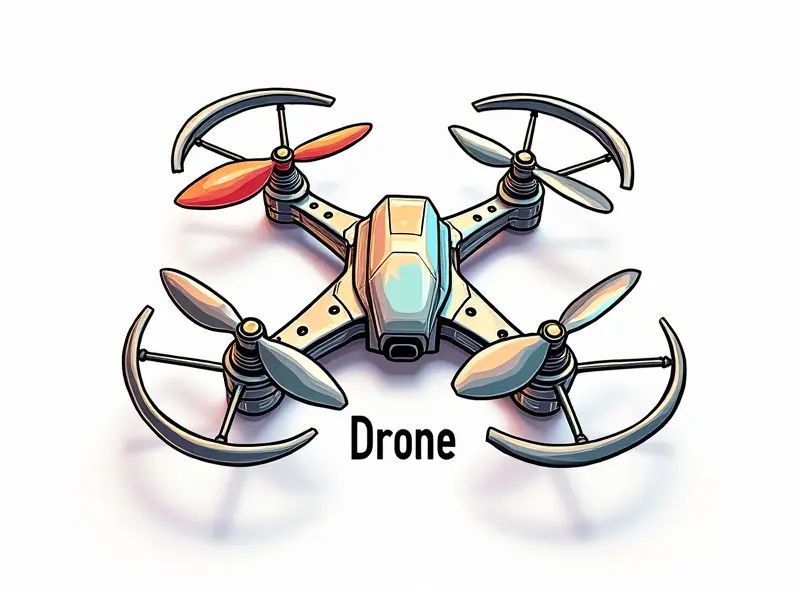Drone flight time: how long?

When it comes to drone flying, flight time is a critical factor that can make or break your aerial adventures. Whether you're an FPV racing enthusiast, RC airplane pilot, or someone who enjoys the thrill of quadcopter flights, understanding how to maximize and optimize your drone's airtime is essential. This article delves into various aspects of extending your drone’s flight duration, providing tips, tricks, and best practices for every type of remote-controlled aircraft.
Maximizing Drone Flight Time Tips
Drone enthusiasts often find themselves frustrated by the limited flight time offered by their drones. However, there are several strategies you can employ to extend your drone’s airtime:
- Opt for Higher-Capacity Batteries: Upgrading to high-capacity lithium polymer (LiPo) batteries is one of the most effective ways to increase flight time.
- Maintain Battery Health: Regularly check and maintain your battery’s health by keeping it charged between 3.8V and 4.2V per cell, avoiding overcharging or undercharging.
- Reduce Weight: Removing unnecessary accessories like cameras or extra propellers can help reduce the load on your drone, thereby extending its flight time.
Boost Your FPV Racing Drone's Endurance
FPV racing drones are designed for speed and agility but often suffer from short battery life. Here’s how you can enhance their endurance:
- Select Efficient Motors: Choose brushless motors with high efficiency ratings to reduce power consumption.
- Optimize Propellers: Use propellers that are designed for maximum lift and minimum drag. This includes using larger, slower-spinning props over smaller, faster ones.
- Upgrade ESCs (Electronic Speed Controllers): Higher-quality ESCs can help manage power more efficiently, extending your flight time without compromising performance.
RC Airplane Flight Time Optimization Guide
RC airplanes are a classic choice for hobbyists and offer unique challenges when it comes to maximizing flight duration:
- Battery Placement: Position the battery as low and central in your airplane as possible. This improves stability and reduces energy consumption.
- Airfoil Selection: Choose airfoils that are optimized for efficiency at cruising speeds, balancing lift with drag.
- Weight Management: Regularly check and adjust the weight distribution to ensure optimal performance and longer flight times.
Extend RC Helicopter Flying Duration Easily
RC helicopters are complex machines that require careful consideration for extended flying time:
- Battery Quality: Invest in high-quality LiPo batteries designed specifically for heli use to ensure reliable and long-lasting performance.
- Gear Ratio Adjustment: Adjust the gear ratio of your helicopter’s transmission system to optimize power delivery, reducing overall energy consumption.
- Regular Maintenance: Keep all moving parts well-lubricated and in good condition to minimize mechanical resistance and improve efficiency.
Common Reasons for Short Drone Flights
Sadly, many drone pilots find themselves facing shorter-than-expected flight times. Here are some common issues:
- Battery Degradation: Over time, batteries lose their capacity and efficiency due to repeated charging cycles.
- Wind Conditions: Strong winds can significantly reduce your drone’s flight time by increasing drag and energy consumption.
- Inefficient Propellers: Using propellers that are not optimized for your specific setup can lead to poor performance and shorter flights.
Battery Management for Longer Drone Flights
Maintaining optimal battery health is crucial for extending flight duration. Here’s how you can manage your batteries effectively:
- Monitor Voltage Levels: Regularly check the voltage levels of each cell in your LiPo battery to ensure they remain within safe operating ranges.
- Avoid Overcharging and Undercharging: Use a charger that can monitor individual cells to prevent overdischarge or overvoltage conditions.
- Store Batteries Properly: Store your batteries in cool, dry places away from direct sunlight to preserve their longevity.
Increase Your Drone's Airtime with These Tricks
There are several lesser-known tricks that can help you get more out of your drone’s battery life:
- Use a Power Booster: Some drones support the use of external power boosters or voltage regulators to increase efficiency.
- Optimize Flight Patterns: Plan your flight paths and maneuvers to minimize energy consumption. Avoid unnecessary climbs, descents, and rapid turns.
- Leverage Solar Power: For long-term projects, consider using solar panels or portable chargers to keep your batteries topped up during extended operations.
Secrets to Boosting Drone Battery Life
Battery life is often the limiting factor in drone performance. Here are some secrets to extending it:
- Select High-Quality Components: Use premium-grade motors, ESCs, and propellers designed for high efficiency.
- Implement Energy-Saving Features: Many modern drones come with built-in energy-saving modes or features that can be activated to extend flight time.
- Maintain Clean Propellers: Regularly clean your drone’s propellers to remove dirt and debris, which can increase drag and reduce efficiency.
Factors Affecting RC Quadcopter Battery Life
The flight duration of an RC quadcopter is influenced by several factors:
- Battery Capacity: The size and capacity of the battery directly affect how long your drone can fly.
- Payload Weight: Carrying additional weight, such as cameras or extra batteries, reduces flight time due to increased energy consumption.
- Flying Conditions: Windy conditions increase drag and turbulence, leading to shorter flights. Optimal weather conditions like calm winds and clear skies are ideal for extended flights.
Optimize Your Drone's Flight Duration
To get the most out of your drone’s flight time, consider these optimization strategies:
- Upgrade to Higher-Capacity Batteries: Upgrading to larger capacity batteries is one of the quickest ways to extend your drone’s airtime.
- Reduce Weight and Drag: Removing unnecessary components or using streamlined designs can significantly enhance flight duration by reducing energy consumption.
- Monitor Battery Health Regularly: Keeping track of battery health through regular checks and maintenance ensures optimal performance over time.

